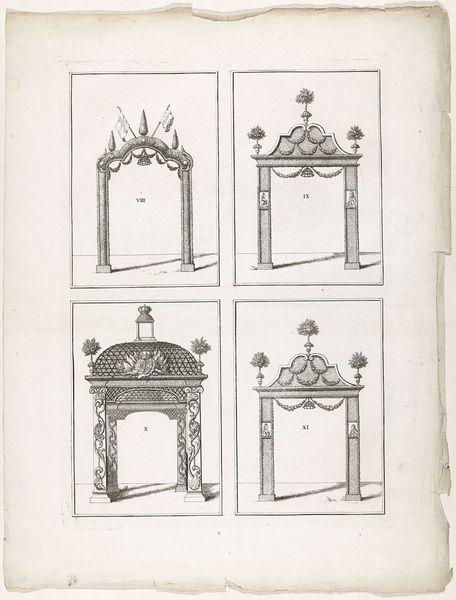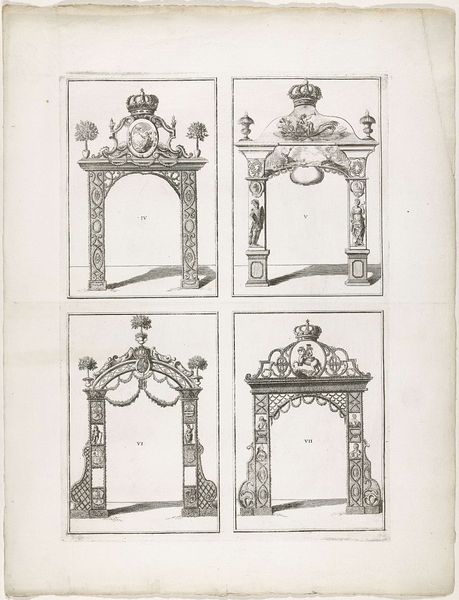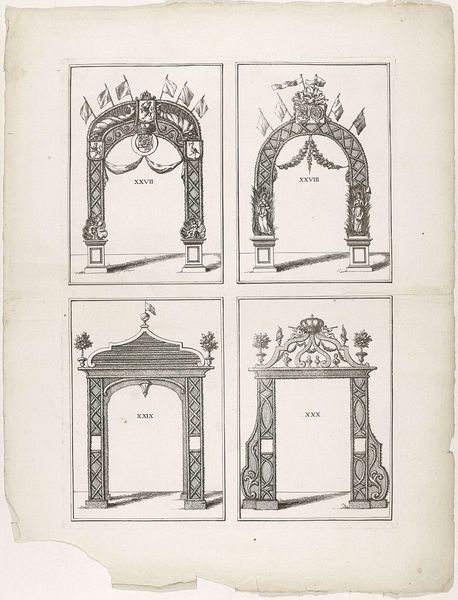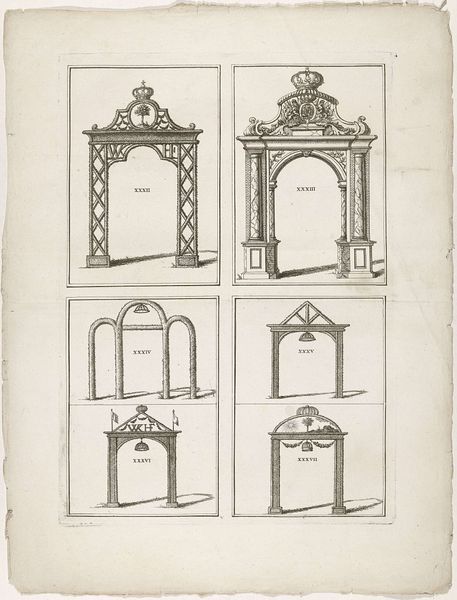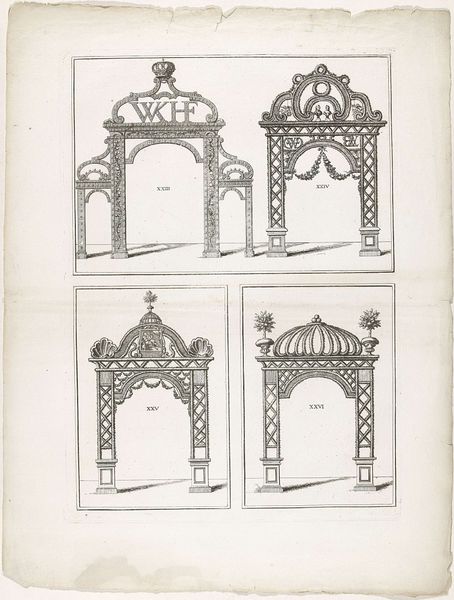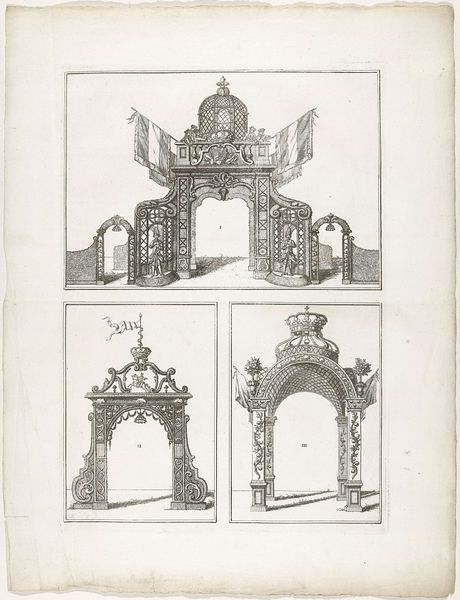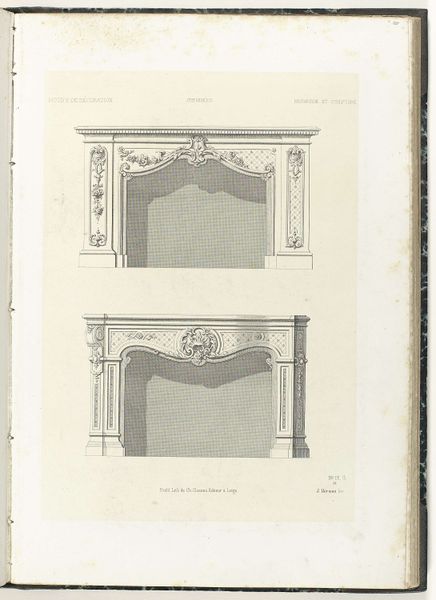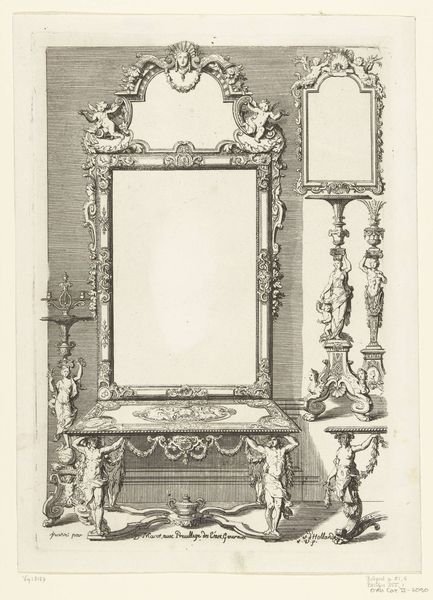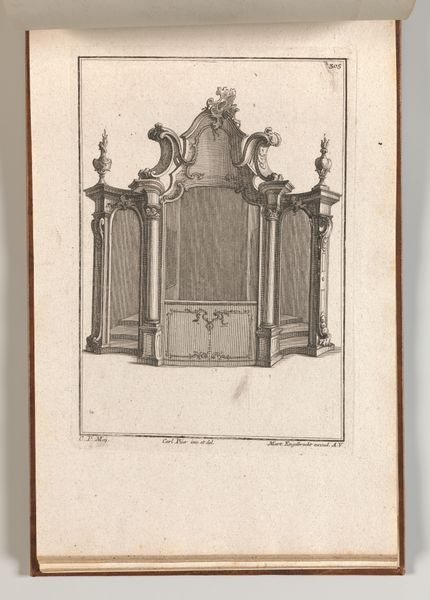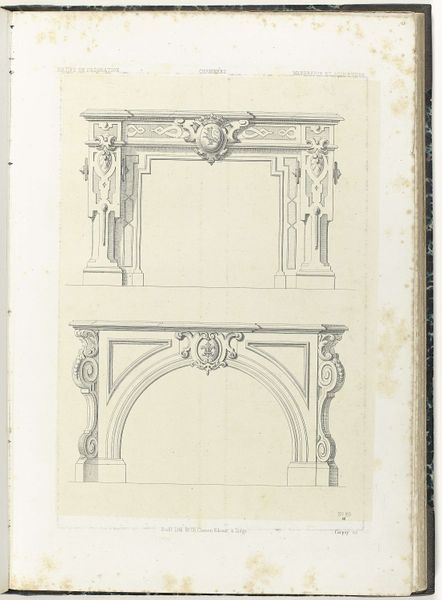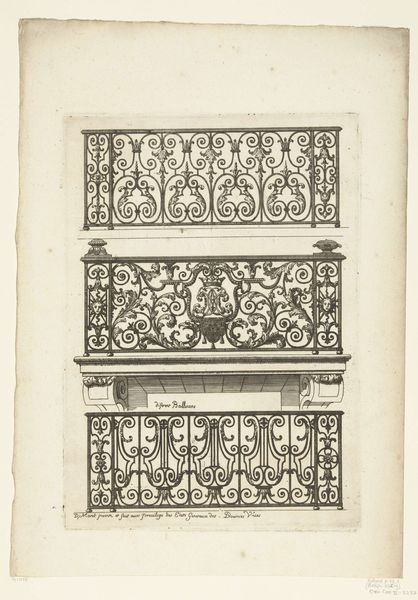
Dimensions: height 545 mm, width 420 mm
Copyright: Rijks Museum: Open Domain
Editor: Here we have Albertus Frese's "Erepoorten XIX-XXII te Den Haag, 1747," created around 1766. It's an engraving, showing four archways. The rigid lines and symmetry almost give a sense of, I don't know, mathematical order. What strikes you about it? Curator: The initial impact arises from its meticulously rendered form. Each archway, clearly distinguished yet sharing a common design vocabulary, presents a study in variations of Baroque architectural elements. The use of line, especially in the crisscrossed patterns of arches XIX and XXI, suggests an interest in depth and structure. Editor: I hadn’t thought of it like a formal study. So you’re focusing on the design principles over, say, the purpose of the archways themselves? Curator: Precisely. Observe how Frese employs recurring motifs – the ornate foliage, the geometric lattices, the symbolic crown in arch XXII. What do these repetitive elements convey in terms of visual language and the relationship between each archway? Editor: It's like he's playing with different possibilities within the same framework. He uses related patterns to form individual pieces. Curator: Precisely! What semiotic properties do the arches, as forms, signify here? Does the architecture take a backseat to the geometric elements that the arches hold within? Editor: I see your point. It's almost as if Frese is diagramming possible structural relationships, not celebrating existing architecture. It makes me appreciate the balance between order and ornamentation, which is neat. Curator: And that interplay encapsulates much of what makes this Baroque engraving so formally intriguing and worthy of closer inspection.
Comments
No comments
Be the first to comment and join the conversation on the ultimate creative platform.
